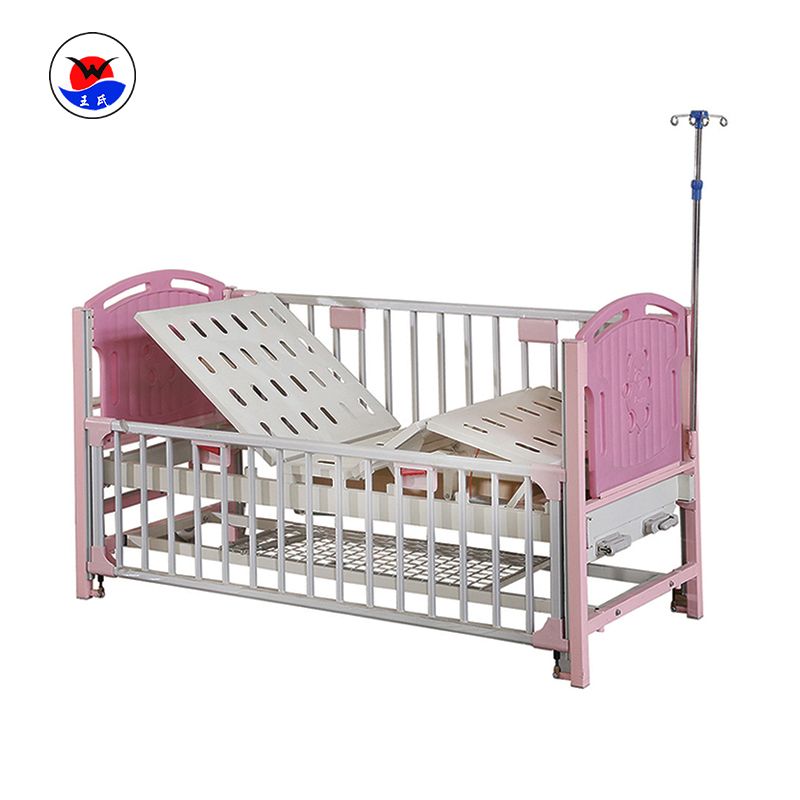Jan. 16, 2025
Choosing the right pediatric hospital bed is critical for ensuring the safety and comfort of young patients. However, customers often face several challenges during the purchasing process. This article addresses the most common concerns and provides practical solutions to help you make an informed decision.
Safety is one of the primary concerns when purchasing pediatric hospital beds. Many buyers worry about falls, entrapment, or insufficient bed rail height, which could lead to injuries.
Solution: Opt for beds designed specifically for children with high, adjustable side rails and rounded edges to prevent injuries. Look for certifications like FDA approval or compliance with IEC 60601 standards, which ensure the bed meets rigorous safety requirements. For example, a pediatric hospital in Texas reduced fall incidents by 30% after upgrading to beds with improved rail locking systems.
Another challenge is selecting beds that are suitable for children of different ages and sizes. A bed that is too small or too large can be uncomfortable and unsafe for the patient.
Solution: Choose beds with adjustable length and width to accommodate various age groups. Some models come with removable extensions to cater to growing children. A hospital in California reported a 40% reduction in bed replacement costs by investing in adjustable pediatric beds that served patients from infancy to adolescence.
Uncomfortable beds can negatively affect a child's recovery and overall experience in the hospital. Thin mattresses or poorly designed frames may not provide adequate support.
Solution: Select beds with high-quality, pressure-relieving mattresses that reduce the risk of bedsores. Beds with ergonomic designs and adjustable backrests can also improve comfort during long stays. A survey showed that 85% of parents rated their child’s hospital stay as more positive when comfort-focused beds were used.

Healthcare staff often struggle with moving or adjusting pediatric beds, particularly in emergency situations. Beds that are heavy or lack proper mobility features can hinder efficiency.
Solution: Look for beds with lockable casters for easy transport and height adjustability for better ergonomics during procedures. For example, a children’s hospital in New York reduced patient transfer times by 20% by upgrading to lightweight, maneuverable beds.
Hospitals must maintain strict hygiene standards, and pediatric beds can be challenging to clean, especially if they have intricate designs or hard-to-reach areas.
Solution: Choose beds with smooth, non-porous surfaces and removable components for easy cleaning. Some advanced models come with antimicrobial coatings that reduce bacterial growth. A recent study found that antimicrobial beds decreased infection rates in pediatric wards by 15%.
Balancing quality and cost is often a concern for hospitals with limited budgets. High-quality pediatric beds may seem expensive upfront but offer long-term benefits.
Solution: Invest in beds with durable materials and versatile features to minimize maintenance and replacement costs. Some manufacturers also offer bulk discounts or leasing options. A community hospital in Florida saved 25% on their equipment budget by opting for cost-effective leasing programs.
By addressing these common concerns, you can select pediatric hospital beds that ensure the safety, comfort, and well-being of young patients while improving efficiency for healthcare providers. Always consider key factors such as safety, adjustability, comfort, and hygiene before making your purchase.
If you’re ready to find the perfect pediatric hospital bed for your facility, reach out to us today. Our expert team is here to guide you through the selection process and provide solutions tailored to your needs.
Previous: 7 Essential Benefits of Metal Screw Cranks for Hospital Beds
Next: How Can Hospitals Choose the Best Hospital Beds for Their Needs?
If you are interested in sending in a Guest Blogger Submission,welcome to write for us!
All Comments ( 0 )